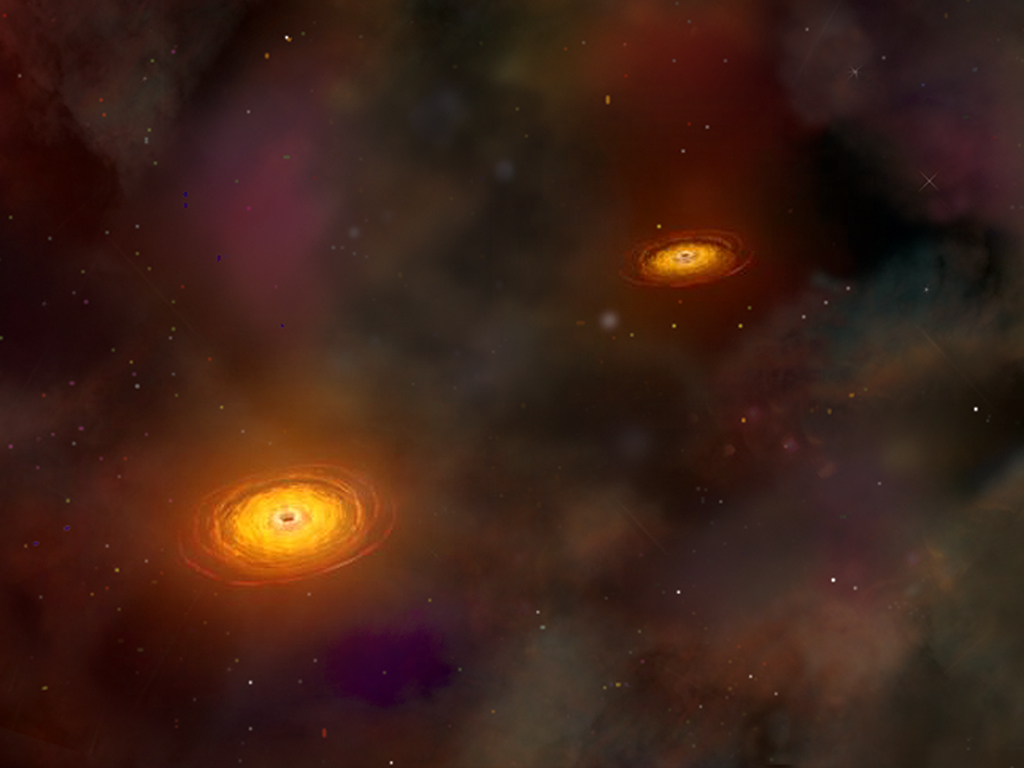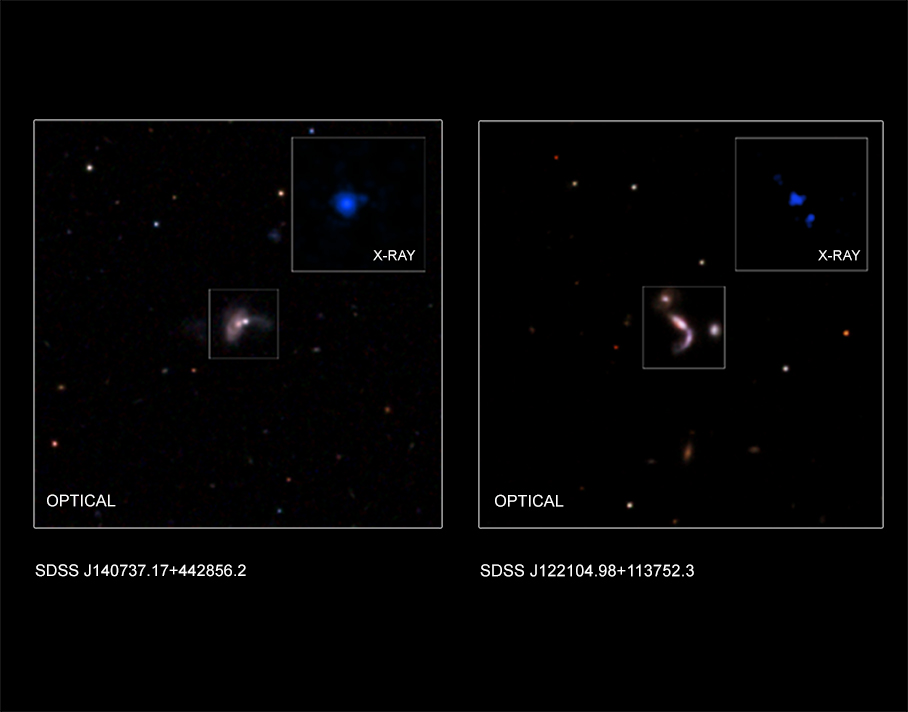Caught In the Act! Five Black Hole Couples Found Merging (Videos)

Astronomers have pinpointed five pairs of merging black holes using three different space- and ground-based instruments and two sky surveys.
A new study used data from the Chandra X-ray Observatory, the Wide-field Infrared Survey Explorer (WISE), the ground-based Large Binocular Telescope in Arizona, the Sloan Digital Sky Survey (SDSS) and the Mapping Nearby Galaxies at APO (MaNGA) survey to identify the pairs. They are circling one another before they eventually merge. Finding the black holes could help astronomers understand how the objects produce such powerful gravitational waves when they finally combine.
The pairs of supermassive black holes, each billions of light years from Earth, are millions of times as massive as the sun, researchers said in a new statement from Chandra. The black holes are in pairs because they come from two galaxies that collided and merged with each other, putting their central black holes in close proximity. Theoretical models predicted this kind of giant black hole pairing should be relatively common, but the phenomenon has been difficult to see, the researchers said.
To find those pairs, astronomers first used the SDSS data to spot galaxies that looked like they were undergoing mergers. Researchers picked out the ones whose centers were less than 30,000 light-years apart and applied the WISE data, looking for colors that matched those of a supermassive black hole.
Then, the scientists used Chandra to see if there was a high level of X-ray emission, which marks a growing black hole. And Chandra had high enough resolution to discern two distinct sources of those emissions, the researchers said. That revealed five black hole pairs that fit the bill.

The combination of X-ray data from Chandra and infrared data from WISE suggests that large amounts of dust and gas surrounds these supermassive black holes; the observatories were measuring wavelengths that could pierce that material and reveal the pairs.
Four of the dual black hole candidates were reported in a paper accepted for publication in The Astrophysical Journal. The other dual black hole candidate was reported in the journal the Monthly Notices of the Royal Astronomical Society and appears online.
Get the Space.com Newsletter
Breaking space news, the latest updates on rocket launches, skywatching events and more!
You can follow Space.com on Twitter @Spacedotcom. We're also on Facebook & Google+. Original article on Space.com.
Join our Space Forums to keep talking space on the latest missions, night sky and more! And if you have a news tip, correction or comment, let us know at: community@space.com.

Jesse Emspak is a freelance journalist who has contributed to several publications, including Space.com, Scientific American, New Scientist, Smithsonian.com and Undark. He focuses on physics and cool technologies but has been known to write about the odder stories of human health and science as it relates to culture. Jesse has a Master of Arts from the University of California, Berkeley School of Journalism, and a Bachelor of Arts from the University of Rochester. Jesse spent years covering finance and cut his teeth at local newspapers, working local politics and police beats. Jesse likes to stay active and holds a fourth degree black belt in Karate, which just means he now knows how much he has to learn and the importance of good teaching.









